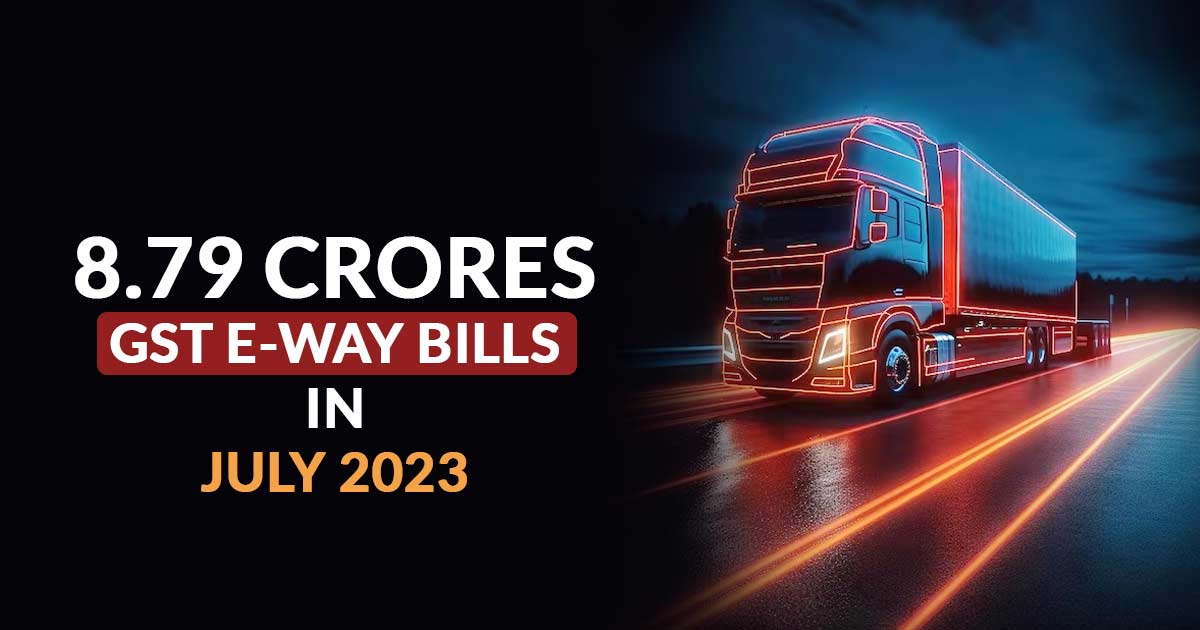
In July, an e-way bill generation would have increased to 8.79 compared to the month of June which stands at 8.61, illustrating the rise in demand. On the GST collection, the same can have a positive influence that depicts a 3rd all-time high of Rs 1.65 lakh cr in the month of July.
The GST collection date for August will be announced on September 1. Aside from increased e-way bill generation, the performance of the services sector has been positive, with a rapid survey-based index (Purchasing Managers’ Index for Services) reaching a 13-year high of 62.3 in July. All of these factors might help to maintain or even accelerate momentum.
A portal-generated electronic document called a “e-way bill” that tracks the transit of goods and shows if taxes have been paid. Every registered person who causes the movement of goods with a consignment value of more than 50,000 is required to provide a GST e-way bill in accordance with Rule 138 of the CGST Rules, 2017, even if it isn’t always on account of a supply. This is necessary for both movements inside a State and between two States. However, a State or UT’s legislature has the authority to determine the minimum value of products that must be moved within its borders.
Even while there is no clear link between the creation of e-way bills and GST revenue, there is an indication that more e-way bills might result in more revenue. The creation of GST e-way bills reached a record high of 9 crore in March, according to data from GSTN (the IT foundation of the indirect tax levy), which led to the record collection of Rs 1.87 lakh crore in April. The generation fell to 8.44 crore in April, while the subsequent collection in May was 1.57 lakh crore.
E-way bill generation increased to 8.82 crore in May, while in June, over 1.61 lakh crore was collected. However, the number of e-way bills generated fell to 8.61 crore in June while the amount collected increased to Rs 1.65 lakh crore in July. Additionally, it does carry out that the transportation of the products took place in the month of consumption or even one month before, which is why the creation of an e-way bill can affect a GST collection that spans two months.
Experts note that, while the monthly increase in GST collection has slowed, they are optimistic about the current fiscal year’s collection. According to Aditi Nayar, Chief Economist at ICRA, there is a clear divergence between revenues from domestic transactions (including imports of services) and those from imported goods, with the latter averaging just 0.8% year on year during April-July 2023, reflecting the compression in merchandise imports. Such divergence would be projected to persist due to the expectation of a decrease in merchandise imports in FY24.
To reach the realistic objective of CGST revenues of 8.1 lakh crore in FY24, GST collections must exceed 1.65 lakh crore/month in the remaining eight months of this fiscal,
A private company that offers GST e-invoice services, the economy is predicted to remain strong and support rising tax revenues in the months to come.









